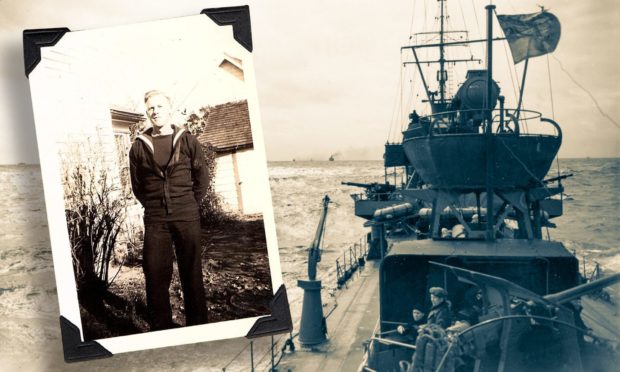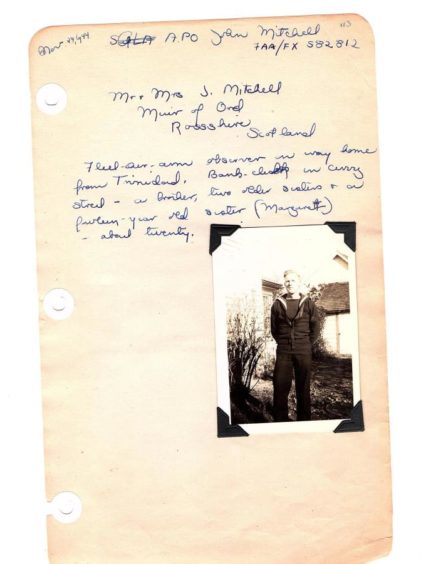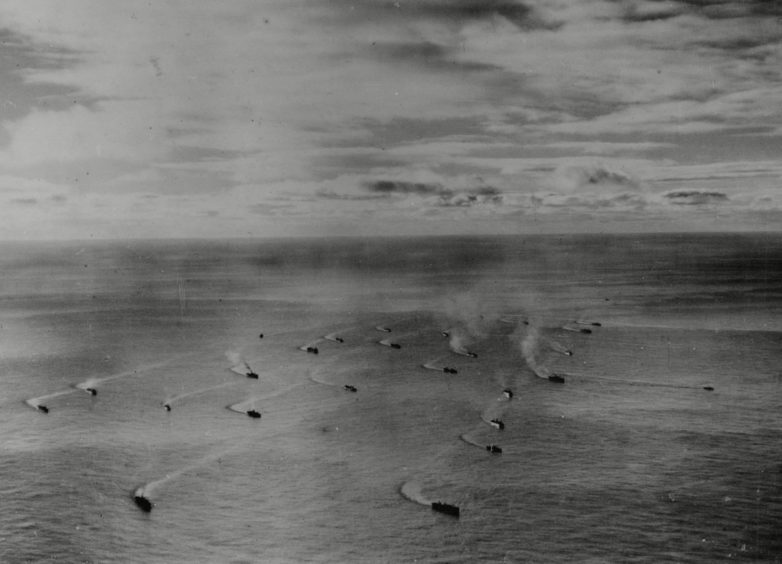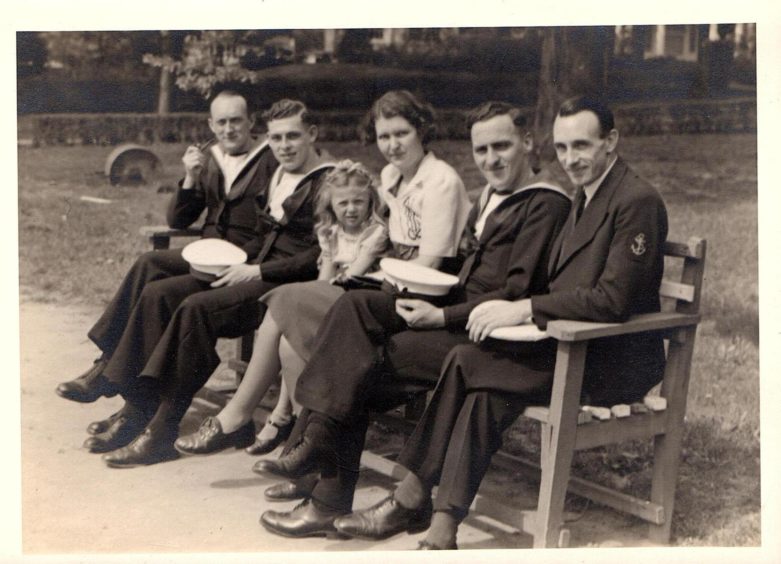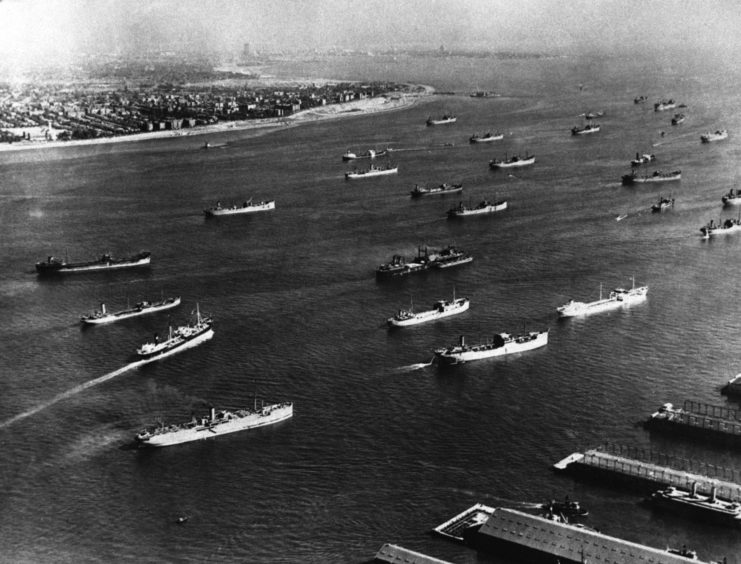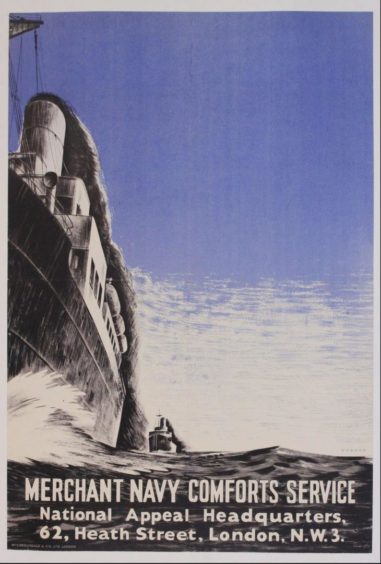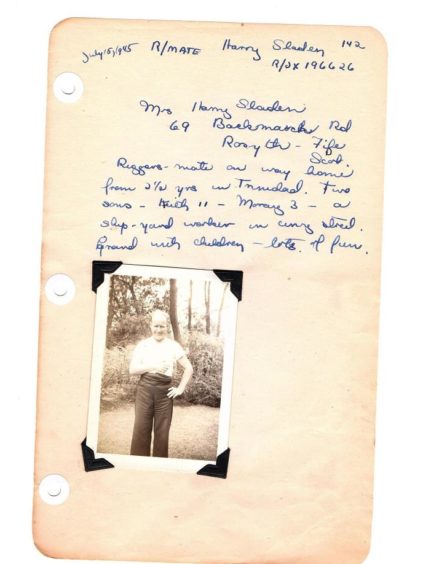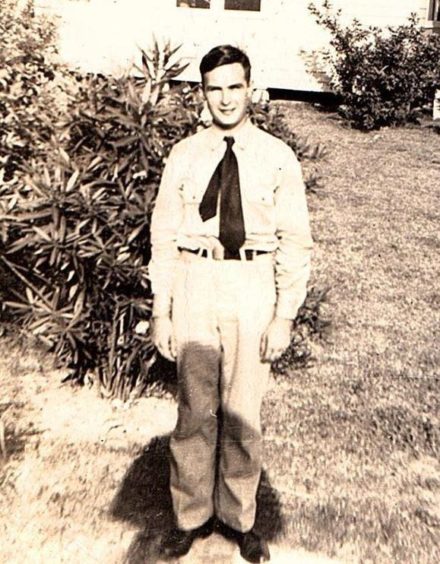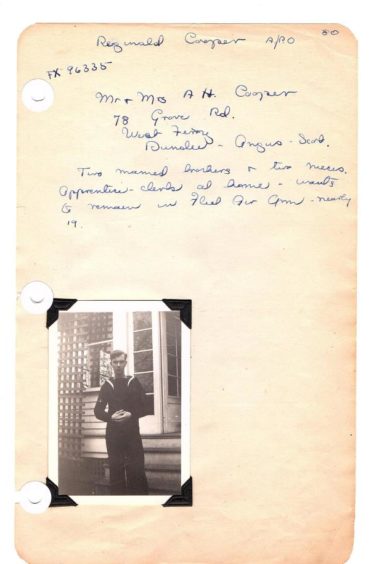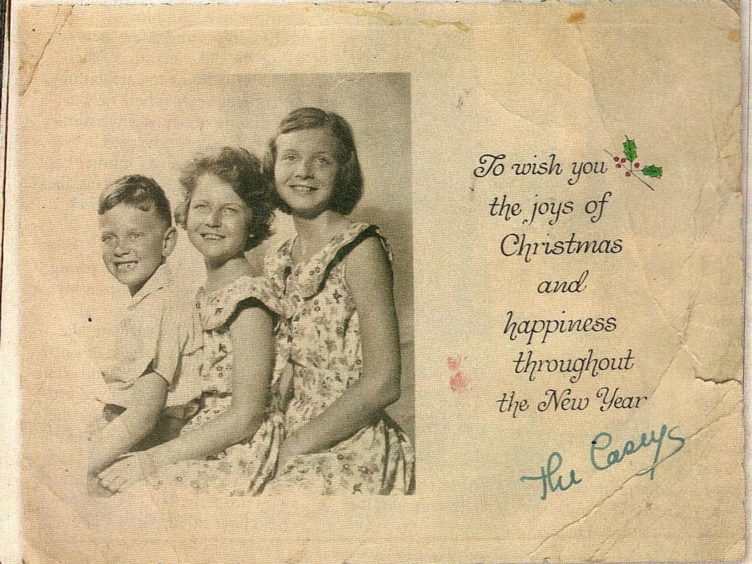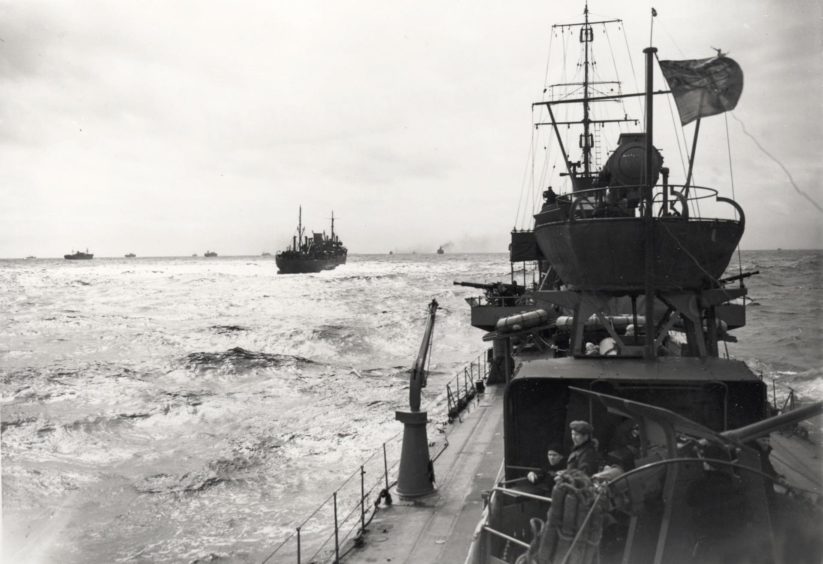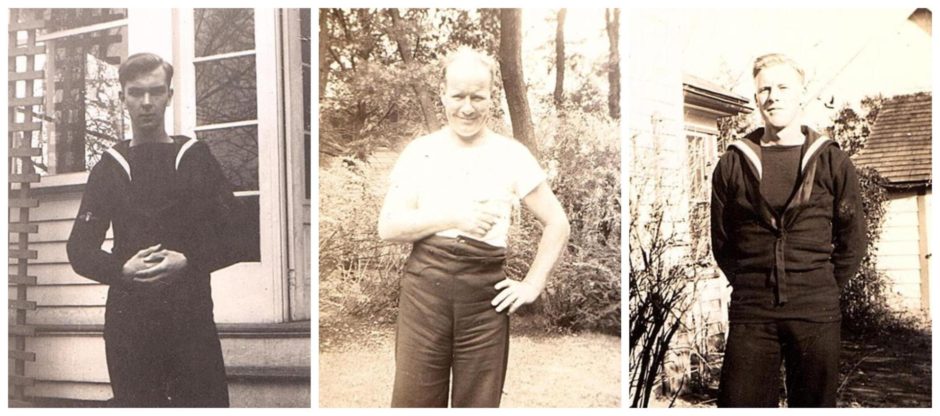A historian is searching for the family of a Highland sailor whose wartime photo was saved from a bin in America.
The image of young serviceman John Mitchell was found in a discarded World War Two scrapbook in New York City.
Gazing out of a black and white polaroid, fair-haired John Mitchell stands at ease in his smart sailor suit, his hands clasped behind his back, smiling at the camera.
At just 20 years old, he was more than 3,000 miles away from his family home in Muir of Ord, Ross-shire, when the photo was taken in Douglaston in New York.
John was part of the Fleet Air Arm and one of 150 men from the Royal Navy, Merchant Navy and the Royal Naval Volunteer Reserve who were deployed through New York shipyards in the Second World War.
A short, hand-written biography accompanies his photo: his parents were Mr and Mrs J Mitchell, he had a brother, older sisters and younger 14-year-old sister, Margaret.
In peacetime he had been working as a bank clerk on the village’s Corry Road, but found himself in New York on the way back from deployment in Trinidad.
While battles raged on mainland Europe, the servicemen were part of a treacherous naval campaign escorting merchant navy ships safely across the Atlantic.
An island nation, Britain relied heavily on these critical convoys to protect vital supplies – and the young men found themselves in the line of enemy fire.
Some of the men were also there to crew ships acquired as part of the lend-lease agreement between America and Allied nations in 1941.
Precious photos
Many of the men had survived being torpedoed and while their ships were being repaired at the Brooklyn Docks, a kindly family took them in to offer them a home from home.
As part of the war effort, citizens were encouraged to offer hospitality to Allied troops who found themselves a long way from their families.
Over the course of the war, naval architect Fraser Casey, his wife Eleanor and three children Peggy, Patsy and Fraser hosted 150 men at their New York home.
The Caseys gave the sailors a chance to unwind after their gruelling and perilous journeys at sea, with good food and time to enjoy past-times with the family.
Remarkably, Eleanor took a photograph and short biography of each of her visitors, and the scrapbook containing these precious mementoes has been recently unearthed.
Now historians have launched a global appeal to track down the descendants of each of the 150 servicemen to reunite the photos with their families.
The research has an added poignancy as some of the men did not make it home and lost their lives during their hazardous missions at sea.
Tremendous task
Military researcher Gloria Winfield took on the epic task in October with genealogist Nicola Girling, after answering a plea for help from Barrie Holden whose father had been one of the men looked after by the Caseys.
Barrie, who lives in Blackburn, Lancashire, found information about the Caseys in old documents belonging to his father and made contact with a history society in Douglaston, New York.
They put him in touch with Eleanor’s daughter Patsy Casey Cox, who rescued the album from being binned and sent it to Barrie, where he found a photo of his father.
Barrie began the formidable task of tracing the families of the servicemen, but the global scale of the task was too much for one person alone.
Gloria said: “Once the war was over these men had seen so many different countries, many of them emigrated to places like South Africa and Australia.
“We have no idea where they ended up, we have no dates of birth, just photos and addresses.
“It’s a tremendous task, initially we thought we just had 61 to find, but it was more like 100.
“These photographs were never seen by the men, it’s 80 years since Eleanor started the album and outside of the USA they’d never been seen before.”
Sailor’s stories
With a long list to get through, Gloria is also looking for the families of two Fife sailors and one from Dundee.
Riggers-mate Harry Sladen hailed from 69 Backmarch Road in Rosyth, where he left behind his wife and children.
He looks relaxed, standing with his hand on his hip as peers from his polaroid looking slightly bemused.
Eleanor’s biography reveals that Harry was a shipyard worker at Rosyth Dockyard.
He found himself at the Caseys on his way home from two-and-a-half years in Trinidad.
Back home, Harry had two sons, Keith, 11, and Moray who was three – he must have been at war for most of his youngest son’s life.
In a heart-warming note, Eleanor adds that Harry is “grand” with her children and “lots of fun”.
Unfortunately some photos have become separated from their biographies, which is the case for John Ritchie, known as Jack.
Jack was 19 when he visited the Casey family about 1945-46, he was an only son of Mr and Mrs J Ritchie, who stayed at 64 Wilson Avenue, Kirkcaldy.
Eleanor’s notes say he was on his way home from Kingston, Jamaica, and after the war planned to train as an actuary.
Gloria has a photo that could be Jack as it ties in with his age and he is pictured at an air base, but is hoping an descendent might recognise the young man to confirm this.
Entry number 80 in Eleanor’s scrapbook is teenage serviceman Reginald Cooper.
He gazes out from a black and white polaroid photo with a slightly furrowed brow, standing at ease in his smart naval uniform, gently clasping his hands.
He was only 18, almost 19, and like the others was thousands of miles from his home at 78 Grove Road in West Ferry, Dundee.
Fond memories
The Casey’s kindness extended beyond the troops they were looking after, and Eleanor also sent care packages to the servicemen’s families back in the UK.
Gloria, who is from Stirling but now lives in Worcester, said: “Having 150 strangers trouping through your house when you have three young children is very generous.
“It’s such a wonderful story. The sailors made such a fuss of the children.
“Eleanor also sent letters to the families saying ‘your men are here and they’re okay.’
“And when she found out some of them had young children she used to send them food and clothing parcels.
“One of the English wives sent a fascinating letter back thanking her, and explaining about the rationing here, it’s social history.”
Patsy, who is now 83, is the last of the surviving Casey siblings and, although very young at the time, can remember the sailors staying at her house.
She said her mother was surprised to learn that despite being in the navy, so many of the men could not swim.
Patsy said: “She took the men to Long Island Pier to teach them to swim or at least teach them to float.
“She was shocked that these men could not swim when they were being torpedoed.
“The sailors were a great attraction for the local girls who were drawn to the pier to meet the men.”
Feel-good tale
The aim of the project is to put together a book sharing the exceptional tale of the Casey’s care and compassion.
It is hoped that copies can be distributed to the families of the men in her care so they can be united with photos of their forefathers they didn’t know existed.
Gloria added: “It’s such a feel-good story, Eleanor was a remarkable woman, and she stayed in touch with many of the men and their families after the war.
“Sadly her son Fraser Casey has just passed away, he was so interested in the project.
“The men used to spoil him and he featured in many of the photos with them.”
Anyone who recognises the names or photos of the sailors is urged to get in touch with Gloria so the photos can be reunited with their next of kin.
Gloria can be contacted at historiangmw@hotmail.com
